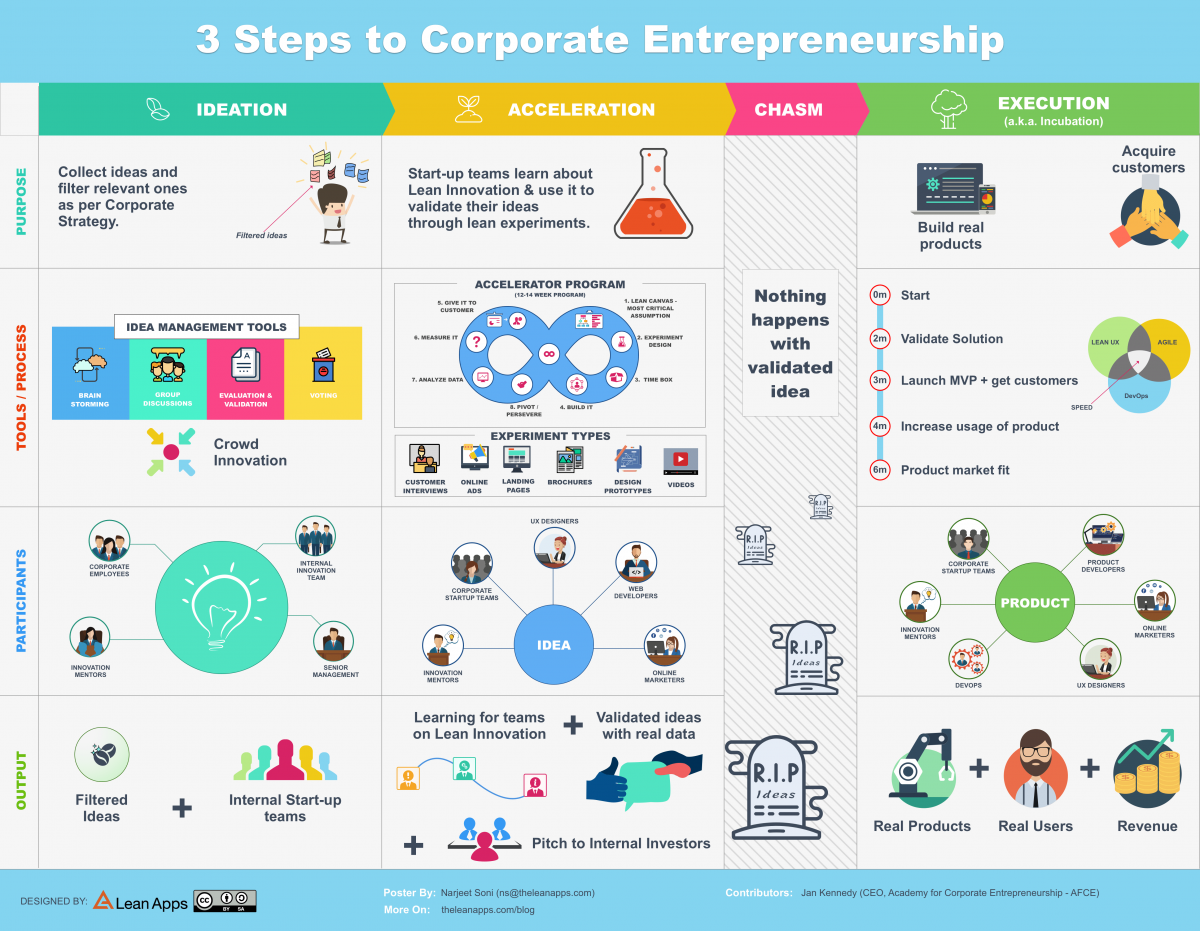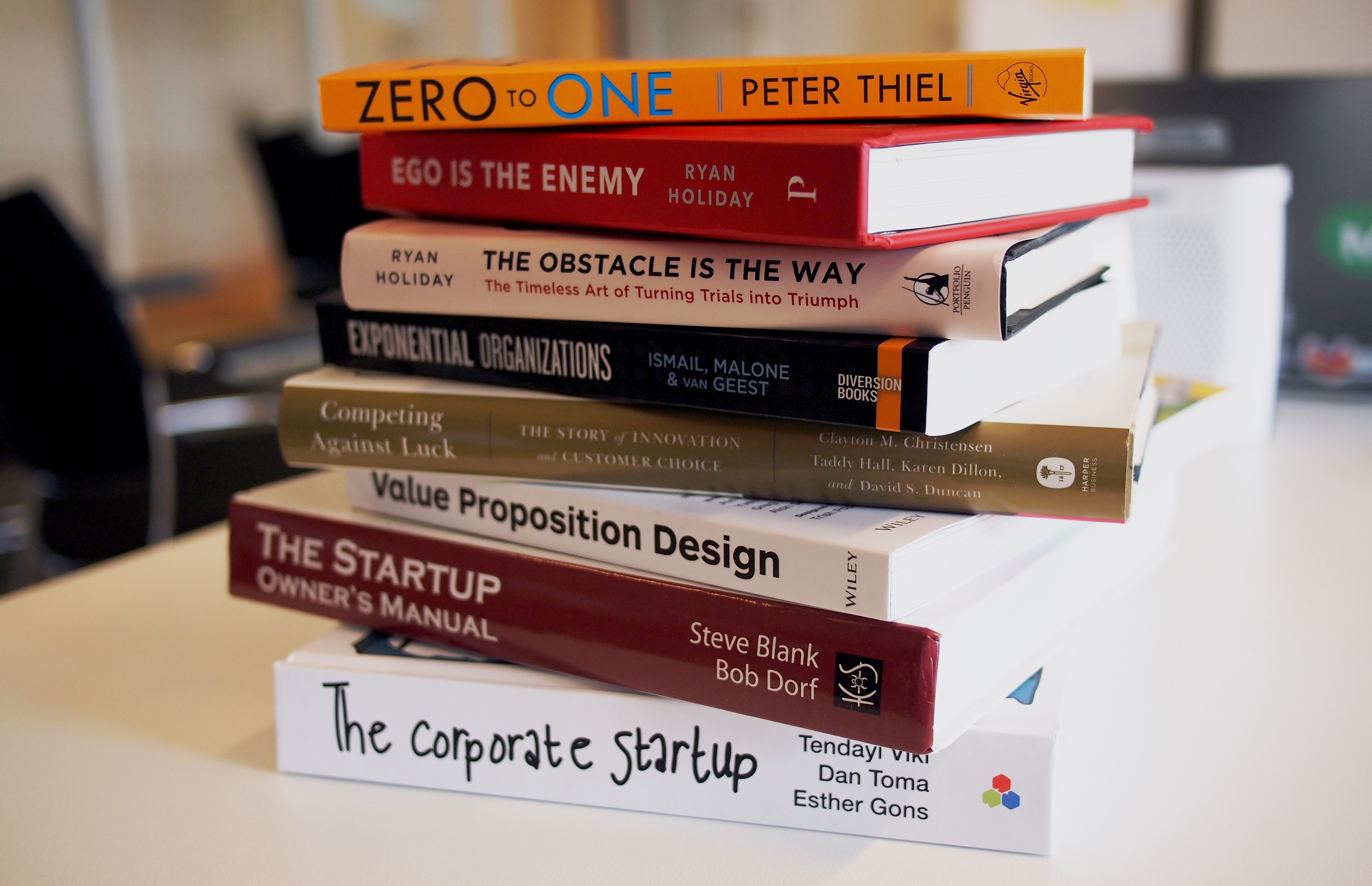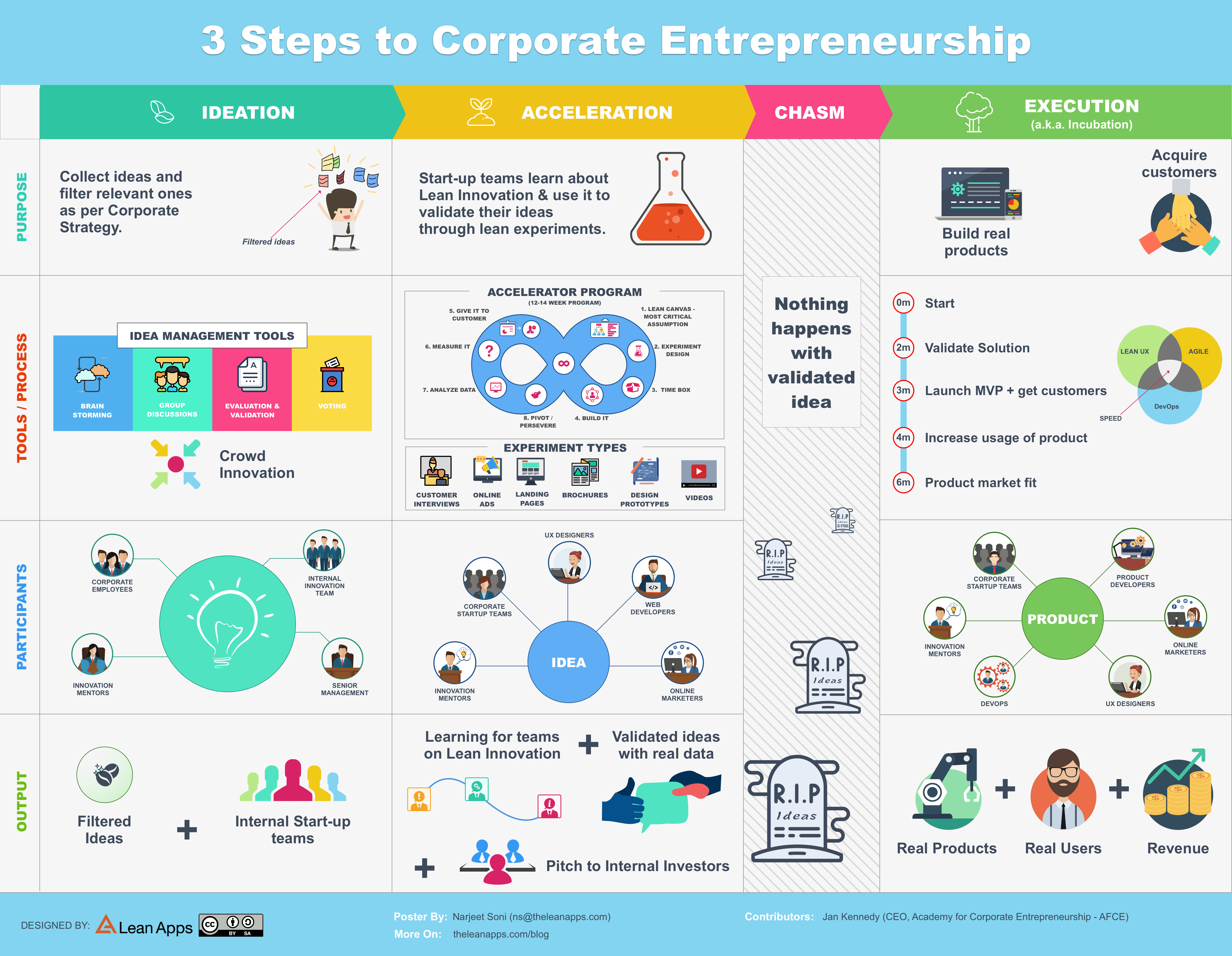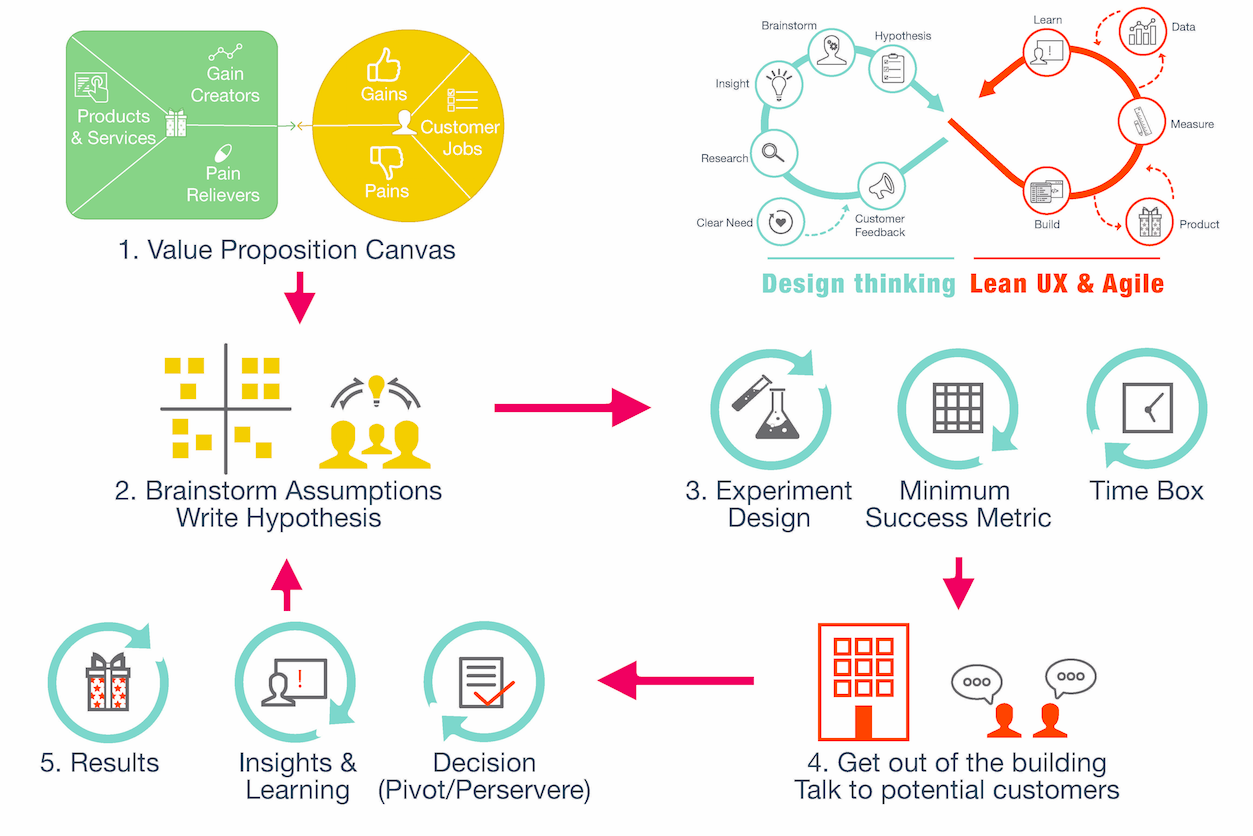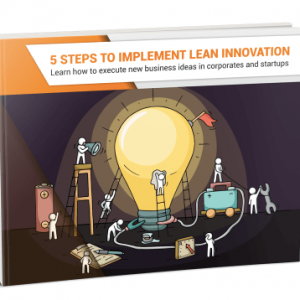Innovation is broken in the corporate world. Almost every big company today has an innovation department and corporate entrepreneurship team, but very few actually have the mindset to drive innovation the way startups do.
We all know about the famous statistic – 9 out of 10 startups fail every year. They fail fast and learn fast. But there is no such failure statistic for big corporates that so loosely claim to be innovative.
Ask an Innovation Head of a big company about its most recent launch, and you are likely to hear the usual responses such as “Our product is not finished yet”, “It will take three more months to launch it”, “We have a cool idea, but we can’t share the details”, etc.
The reality is that most of these companies either don’t end up launching anything, or launch something that they have built over a long period of time – typically 1-3 years. Most of the ideas that are launched fail to deliver any revenue for the company.
In the absence of revenue, innovation is perceived as a constant cost to the company. Success (rather than the potential of an idea) becomes the most important criteria of innovation. So much so that the innovation team sometimes forcibly tries to show that the product could work.
In such a setup, innovation is bound to suffer. It’s unfair to measure employees working on innovation projects in the same way as employees working on revenue-generating projects.
There are four different types of innovation that companies can aim for:
- Improving the existing business model to save cost for the company
- Adding a new offering to the current business model to upsell to the existing customers
- Disrupting the current business model to capture customers from competition or acquire new customer segments
- Working on a totally new business model, which is different from the core business of the company
The following is good three-question litmus test to use to define innovation:
- How many new products did you launch last year?
- How many new customers did you acquire?
- How much revenue (real or potential) did it create for the company?
Most of the innovation departments in big companies would fail numbers 2 and 3. All three can be achieved through corporate entrepreneurship (or intrepreneurship or corporate innovation).
Corporate entrepreneurship is a practice of building small startup teams within a corporate to test and validate new business models following the Lean Innovation process.
The basic ideology behind lean innovation is, “Don’t let perfection get in the way of your progress.” Simply broken down into four steps, this is how it can work:
- Validate your most critical unknown assumptions
- Identifying the minimum viable product
- Developing the first version quickly and testing it with customers, ideally in a real-world competitive situation
- Repeating the process until the core product is competitive, or pivoting to explore a new approach
The goal of a team is to work on new business models and validate their viability very fast – within a couple of weeks. A team must generate enough real data about the idea to make this decision – is the idea worth further investment from the corporate? This process helps in filtering ideas at a fast pace, thus avoiding long-running project costs to the company.
The process of building a corporate entrepreneurship can be divided into three phases:
Ideation: Collect ideas from employees and filter the relevant ones. Create small startup teams that will work on these ideas.
Acceleration: Startup teams learn about the Lean Innovation process and apply it to their idea. They collect real data to validate or invalidate their idea.
Execution: Validated ideas from acceleration are developed within a few weeks. Real customers are acquired and startup teams look for the right product-market fit.
Ideation
Collect ideas: The goal of this step is to involve employees in the process of problem–solving. Usually, employees tend to focus on problems that they face in their respective departments.
But we have seen that these ideas could become an upsell for the existing customer segment of a company. Some ideas may even disrupt the core business model of the company, while others may be lead to a totally new business model.
All ideas are collected using idea collection platforms that are set up by the innovation department within the company. There are a bunch of SaaS platforms available in the market that are usually hosted on the company intranet.
These platforms have the user experience similar to a social network where other employees can like, comment, and attach files for their colleagues. They can also vote on an idea.
The most innovative method we have seen so far is the one used by an automotive company offering X dollars to all its employees – if the employees like an idea, they can use this money to crowdfund it.
Filter ideas: Once the ideas are collected, they need to be filtered. The filtering algorithm differs from company to company. Some do it democratically based on votes from other employees. Some set up external innovation consulting teams that filter ideas based on their corporate entrepreneurship strategy.
Some companies allow the idea owners to have a five–minute pitch in front of a panel that usually consists of senior management, internal innovation team members, and external innovation mentors.
Form small teams: Employees who pitch their ideas form their own small startup teams. Typically they choose to work with four or five colleagues. Sometimes these teams are formed through the idea collection platform,where one employee from country X can be interested in working on an idea from an employee of country Y.
The basic principle is employees have to commit to 10 hours per week (20-30 percent of their time) on their ideas, along with their daily jobs.
Acceleration
Acceleration is a usually-12-week programme mostly offered by external companies, where startup teams learn about the corporate entrepreneurship process. Each team is mapped with a mentor, who is an active entrepreneur or has exited from startups, and is well aware of the way startups run.
The programme kicks off with two days of very intense onsite workshops, followed by 11 weeks of the virtual programme. Each week, mentors guide the teams to design their Lean experiments – different ways to validate customers, problems, and solutions without building the product.
Teams are given weekly assignments and they have to present the results in the following week. Based on the learning from the previous week, experiments for following weeks are designed.
Typical experiments conducted during the programme are customer interviews, online surveys, online ads on Facebook, Google, Twitter, LinkedIn, landing pages, brochures, flyers, design prototypes, illustrations, and solution videos. All of these help in validation and collecting real customer data.
Often teams are not technically equipped to set up these experiments by themselves. So in order to avoid them from getting stuck, one can create a concept of a prototype fund. For example, a budget of €10,000 is granted to each startup team. This money can be used to set up experiments with the help of designers, online marketers, and developers.
The goal is to remove all the technical barriers during the programme and help the teams in collecting data faster with a limited budget efficiently.
At the end of an accelerator programme, each team must pitch its idea and findings to internal investors. A panel of senior management, the internal innovation team, and innovation mentors decide whether the idea should be further built or killed.
Validated ideas raise seed investments of anything between €100K-250K, which is used to go into the execution phase.
In 2017, we noticed that most of the viable ideas fail to go beyond acceleration if left alone. The reasons, we found out, were lack of support from internal IT, design, and marketing teams, and sometimes no support from innovation mentors. As a result, most of the employees working on corporate entrepreneurship ideas end up going back to their daily jobs.
Execution (a.k.a. incubation)
Execution (or incubation) allows startup teams to build a real product, acquire real customers, and get product-market fit within six months. By the end of this programme, teams are able to answer three key questions:
- Who is using our product?
- Why and how are they using our product?
- Why will they pay to use the product?
The execution programme is usually six months long, with different targets every month:
0-2 months: Launch a semi-automated system to provide user experience to the end customer. Operations remain manual in the background.
2-3 months: Launch a fully functional Minimum Viable Product.
3-4 months: Acquire customers for your product and work on increasing the usage of the product.
4-6 months: Find the product-market fit, who is using the product, why and how they are using it, and why theywill pay to use it.
Revenue is not necessarily the only measure of success. There are ideas that could bring massive cost savings to the company. For example, we worked with a company that digitalized its paperwork to save X million dollars per year.
I recommend that once the product-market fit has been achieved, it’s time to scale up. Team membersmust be involved on a full-time basis and paired with experienced mentors. Expertise involved in product design, development, sales, and marketing must be developed in-house. This is the ideal time to develop as many skills in the team as possible.
(This blog post was originally published on yourstory.com)
